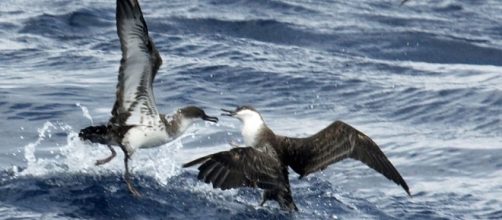The behavior of birds is an indicator of the health of the Environment and, when a large number of the usually agile seabird known as the shearwater washed up emaciated on Long Island beaches it came as a shock to experts.
A wildlife pathologist in New York who carries out necropsies feels this is an incident which has to be investigated. He usually handles very few specimens that wash up dead on the beaches and they are of lone adults or juveniles that had come too close to the shore. However, the large number of shearwaters is a matter of concern because this is the first time that such a situation has arisen.
Seabirds indicate the health of the oceans
Sky News reports that in the opinion of experts, the study of the carcasses could throw light on why these shearwaters died and can be considered to be an indicator of the health of the world’s oceans. The carcasses are extremely thin and anemic and, at first glance, it would appear that they had died of hunger. This would be strange since they are seabirds and spend the majority of their lives at sea. They hardly ever venture to the shore, hence their death throws up innumerable questions.
One explanation for such deaths could be the changes in the environment due to various reasons. Scientists are trying to understand the impact of climate change. They feel seabirds play an important role in this study because they carry with them messages from the most inaccessible waters of the world.
These birds very seldom come to the shores and travel through a wide variety of regions and traverse through different weather patterns. They survive by feeding on prey that would have been exposed to carbon emissions and, stay above the surface of the water.
Uniqueness of the shearwaters
The greater shearwaters have long tails and long wings and are comparable to the size of small sea gulls.
They nest on remote islands in the south Atlantic, more than 1,500 miles from land, and migrate to the waters off New England and Newfoundland. They pass through Long Island in the month of June after feeding in the Caribbean and move on to the Gulf Stream.
These seabirds are very seldom visible on land as informed by an ornithologist at the American Museum of Natural History.
It seems an offshore weather system pushed an entire flock very much near the land over the shores in Nassau County and it was a torture for the winged creatures. Bird lovers who went there were stunned to see hundreds of them battling the wind and fog. It was an environment that was alien to them and the result was hundreds of carcasses and, while a few were rescued, they did not survive. Most of them were young, and bits of plastic were found in the stomach of some but whether the death was due to ingestion of plastics or due to hunger is not known.


